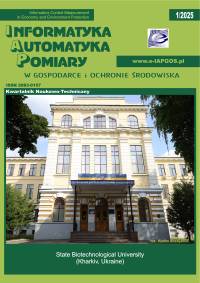ANOMALIE W MODELOWANIU PROCESÓW BIZNESOWYCH
Anna Suchenia
asuchenia@pk.edu.plPolitechnika Krakowska, Wydział Inżynierii Elektrycznej i Komputerowej (Polska)
Antoni Ligęza
Akademia Górniczo-Hutnicza w Krakowie, Wydział Elektrotechniki, Automatyki, Informatyki i Inżynierii Biomedycznej (Polska)
Abstrakt
W dziedzinie procesów biznesowych najbardziej popularne jest modelowanie Business Process Modeling Notation (BPMN). BPMN jest istotny z praktycznego punktu widzenia, a przy tym oferuje wiele wyzwań dla programistów i naukowców. Specyfikacja diagramu BPMN jest stosunkowo precyzyjna, ale jest to tylko forma opisowa prezentowana na abstrakcyjnym poziomie graficznym. Większość prac w tym obszarze skoncentrowanych jest na wykorzystaniu możliwości, jakie oferuje notacja BPMN. Jednak wciąż nie ma dokumentów analizujących ewentualne błędy oraz sposoby ich wykrywania i eliminowania. Celem artykułu jest próba analizy zagadnienia anomalii, które mogą wystąpić w notacji BPMN. Badanie opiera się na analizie literatury oraz własnym doświadczeniu z modelowania w języku BPMN. Przeprowadzone analizy pozwoliły na zidentyfikowanie kilku najczęściej występujących rodzajów anomalii: strukturalnych i składniowych.
Słowa kluczowe:
BPMN, modelowanie procesów biznesowych, anomalie, anomalie strukturalne, anomalie składnioweBibliografia
Awad A., Decker G.: Lohmann N.: Diagnosing and Repairing Data Anomalies in Process Models. Springer, 2009, 5–16.
Google Scholar
Borger E., Sorensen O., Thalheim B.: On defining the behavior of OR-joins in business process models. Journal of Universal Computer Science 14/2009, 3–32.
Google Scholar
Desheng X., Kejian X., Dezheng Z., Huangsheng Z.: Model Checking the Inconsistency and Circularity in Rule-Based Expert Systems. Computer and Information Science 2009, 12–17.
Google Scholar
Dohring M., Heublein S.: Anomalies in Rule-Adapted Workflows - A Taxonomy and Solutions for vBPMN. Software Maintenance and Reengineering (CSMR) 2007, 117–126.
Google Scholar
Good e-Learning: www.blog.goodelearning.com, 2015.
Google Scholar
Hallerbach A., Bauer T., Manfred R.: Capturing Variability in Business Process Models. The Provop Approach. Journal of Software Maintenance and Evolution. Research and Practice 22/2010, 519–546.
Google Scholar
Kim G., Lee J. H., Son J. H.: Classification and Analyses of Business Process Anomalies. Communication Software and Networks 2009, 433–437.
Google Scholar
Kuhne S., Kern H., Gruhn V.: Laue R.: Business process modeling with continuous validation. Journal of Software Maintenance and Evolution. Research and Practice 22/2010, 547–566.
Google Scholar
Laue R., Awad A.: Visualization of Business Process Modeling Anti Patterns. Electronic Communications of the EASST 25/2009.
Google Scholar
Ligęza A.: BPMN a logical model and property analysis. Decision Making in Manufacturing and Services 5/2011, 57–67.
Google Scholar
Ligęza A., Nalepa G. J.: A study of methodological issues in design and development of rule-based systems: proposal of a new approach. Data Mining and Knowledge Discovery 2011, 117–137.
Google Scholar
Lin H., Zhao Z., Chen Z.: A novel graph reduction algorithm to identify structural conflicts. Proceedings of the 35th Hawaii International Conference on System Sciences 2002, 289.
Google Scholar
Ling H., Bo Z. J.: Research on workflow process structure verification. e-Business Engineering 2005, 158–165.
Google Scholar
Liu R., Kumar A.: An Analysis and Taxonomy of Unstructured Workflows. Springer 2005, 268–284.
Google Scholar
Lohmann N., Wolf K.: How to Implement a Theory of Correctness in the Area of Business Processes and Services. Springer 2010, 61–77.
Google Scholar
Mendling J., Verbee E., Dongen B., Aalst W., Neumann G.: Detection and Prediction of Errors in EPCs of the SAP Reference Model. Data & Knowledge Engineering 64(1)/2007, 312–329.
Google Scholar
Mroczek A., Ligęza A.: A Note on BPMN Analysis. Towards a Taxonomy of Selected Potential Anomalies. Proceedings of the 2014 Fedcsis, 2014, 1097–1102.
Google Scholar
Negnevitsky M.: Artificial Intelligence. A Guide to Intelligent Systems. Addison-Wesley, England, 2002.
Google Scholar
Olkhovich L.: Semi-Automatic Business Process Performance Optimization Based On Redundant Control Flow Detection. AICT-ICIW, 2006, 146–146.
Google Scholar
OMG: Business Process Model and Notation. http://www.omg.org/spec/BPMN/2.0/PDF/, 2011.
Google Scholar
OMG: www.bpmn.org, 2015.
Google Scholar
Suchenia A., Ligęza A.: Event anomalies in modeling with BPMN. IJCTA, 6(5)/ 2015, 789–797.
Google Scholar
Trcka N., Sidorova N., Aalst W. M. P.: Data-Flow Anti-patterns. Discovering Data-Flow Errors in Workflows. Springer, 2009, 425–439.
Google Scholar
Aalst W. M. P., Hirnschall A., Verbeek H.: An Alternative Way to Analyze Workflow Graph. Springer, 2002, 535–552.
Google Scholar
White S. A.: Introduction to BPMN. IBM Corporation, 2004.
Google Scholar
White S. A.: Process Modeling Notations and Workflow Patterns. IBM Corporation, 2004.
Google Scholar
Zaidi A. K., Levis A. H.: Validation and verification of decision making rules. Automatica 33/1997, 155–169.
Google Scholar
Zubrow D.: IEEE Standard Classification for Software Anomalies. IEEE Computer Society, 2009.
Google Scholar
Autorzy
Anna Sucheniaasuchenia@pk.edu.pl
Politechnika Krakowska, Wydział Inżynierii Elektrycznej i Komputerowej Polska
Autorzy
Antoni LigęzaAkademia Górniczo-Hutnicza w Krakowie, Wydział Elektrotechniki, Automatyki, Informatyki i Inżynierii Biomedycznej Polska
Statystyki
Abstract views: 387PDF downloads: 397
Licencja

Utwór dostępny jest na licencji Creative Commons Uznanie autorstwa – Na tych samych warunkach 4.0 Miedzynarodowe.









